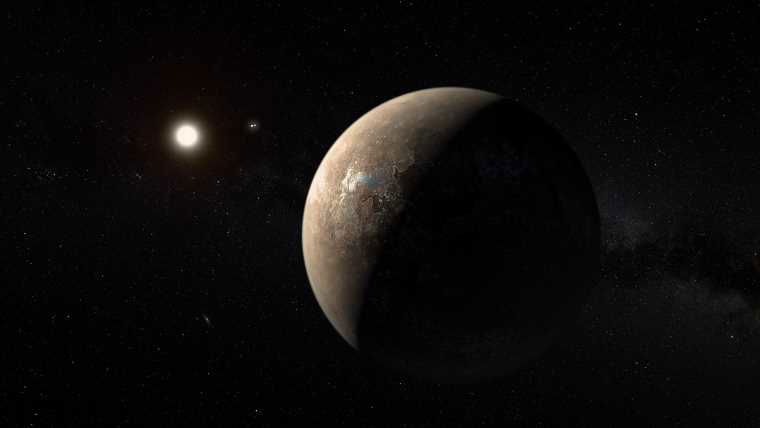A team of researchers studying Proxima Centauri b, an exoplanet orbiting Earth’s closest stellar neighbor, say their analysis of the effects of ozone on atmospheric stability represents a ‘significant leap forward’ in understanding habitable Earth-like planets and the search for life.
The researchers feel their work could not only help constrain which planets are truly habitable but also guide future efforts to analyze the atmospheres of distant exoplanets for signs of life.
“Imagine a world where ozone affects temperature and wind speed and holds the key to a planet’s very habitability,” explained study leader Dr. Assaf Hochman from the Fredy and Nadine Herrmann Institute of Earth Sciences at the Hebrew University of Jerusalem. “Our study unveils this intricate connection and underscores the importance of considering interactive ozone and other photochemical species in our quest to understand Earth-like exoplanets.”
In their research, Dr. Hochman and his co-authors, Dr. Paolo De Luca of the Barcelona Supercomputing Center in Spain, Dr. Thaddeus Komacek of the University of Maryland, and Mr. Marrick Braam of The University of Edinburgh, used data about the atmospheric dynamics of Proxima Centauri b gathered by some of the most advanced observatories in the world, including the James Webb Space Telescope (JWST).


In previous decades, the tools to carry out this type of research were limited. However, modern day observatories like the JWST have dramatically increased the amount of data on exoplanets and their atmospheres available to researchers. For example, The Debrief recently covered how researchers using the JWST were able to map the weather on an exoplanet planet over 280 light years away. For comparison, Proxima Centauri b is only a little more than 4.2 light years away.
Next, the team used sophisticated ‘coupled’ climate chemistry model simulations and recent advances in dynamical systems theory to model various concentrations of ozone, wind patterns, and other atmospheric dynamics that would affect a planet’s overall habitability.
According to a press release announcing the study’s findings, which were published in the Monthly Notices of the Royal Astronomical Society, the team found a significant influence of ozone on atmospheric temperature distribution and wind patterns. By incorporating that influence into their habitability models, the team says they observed “reduced hemispheric temperature differences and increased atmospheric temperature at specific altitudes, hinting at the delicate balance between the atmosphere’s chemical composition and climate dynamics.”
“The study advances our knowledge of Proxima Centauri b and lays the groundwork for future investigations into exoplanetary atmospheres,” the release explains. “ By extending this framework to other potentially habitable exoplanets, scientists aim to unravel the diverse range of atmospheric compositions and climate regimes across the cosmos, allowing a better understanding of Earth’s climate dynamics.”
Moving forward, the researchers say that their findings set a ‘framework’ for understanding and modeling the effects of photochemical species on the climates of exoplanets, particularly planets that strike the delicate balance necessary for life to exist. They also feel that the expanding set of observational tools that are coming online after the JWST, such as the Extremely Large Telescope in Chile, will generate even more detailed data on exoplanet atmospheres, further aiding the search for life in the cosmos.
“We stand at the brink of a new era in exoplanetary exploration,” says Dr. Hochman. “With each discovery, we inch closer to unraveling the mysteries of distant worlds and perhaps even finding signs of life beyond Earth.”
Christopher Plain is a Science Fiction and Fantasy novelist and Head Science Writer at The Debrief. Follow and connect with him on X, learn about his books at plainfiction.com, or email him directly at christopher@thedebrief.org.

